
Do you have a question about the Sony BRAVIA KDL-55W805B and is the answer not in the manual?
| Screen Size | 55 inches |
|---|---|
| Resolution | 1920 x 1080 pixels |
| Display Type | LED |
| Smart TV | Yes |
| HDMI Ports | 4 |
| USB Ports | 3 |
| Wi-Fi | Yes |
| Ethernet Port | Yes |
| Refresh Rate | 200 Hz |
| 3D | Yes |
| Sound Output | 20 W |
Guides on operating the TV using remote controls, including IR and Touchpad types.
Instructions for using the Discover feature to search for content like TV programs and internet items.
Overview and navigation of the TV's Home Menu screen, including categories and subcategories.
How to adjust various picture settings for optimal viewing experience.
Explains how to navigate, search, and utilize features within the on-screen manual.
Connect and enjoy content from external devices like cameras, PCs, and smartphones.
Use social network services while watching TV to chat with friends and view comments.
How to access and use TV applications and services available on the device.
Identifies and describes the physical parts of the TV set, including front and rear components.
Explains the different parts and functions of the standard remote control.
Details the usage and features of the optional touchpad remote control.
Instructions on how to display the on-screen virtual keyboard for input.
Guide to using the Discover feature for efficient content search.
Explanation of the Home Menu structure, categories, and navigation.
How to choose TV channels using Discover, Home Menu, or number buttons.
Special features for enhancing the experience of watching football content.
Accessing and viewing text-based information services like news and schedules.
How to use the TV's digital programme guide to find and select programs.
Searching for TV programmes and cast/crew details within the guide.
Instructions for viewing 3D content and using compatible 3D glasses.
How to display two pictures simultaneously on the screen (e.g., PIP).
Guide to using Picture-in-Picture mode for simultaneous viewing.
How to display side-by-side pictures on the screen.
Options to change display information, picture size, and audio output.
How to view current programme or channel information on screen.
How to turn subtitles on/off and select preferred languages.
Adjusting the picture aspect ratio and display format for optimal viewing.
How to select audio signals and adjust sound modes.
Information on Near Video On Demand and Multi Feed broadcasting standards.
How to watch movies from online services, USB devices, or home networks.
How to play music content from connected devices or home networks.
Instructions for viewing photos on the TV screen from various sources.
Accessing and managing applications on the TV, including featured and custom apps.
How to use the TV's built-in web browser to access internet websites.
Enjoying video content from the internet via various on-demand services.
Setting up and using Skype for video calls and communication.
Initial setup procedures for internet services and applications like Skype.
How to make video or voice calls using the TV's Skype functionality.
Using social viewing to chat with friends and comment on TV programs.
How to invite friends to watch the same program via social networks.
Using the programme guide to find and invite friends to watch shows.
Connecting and operating BD/DVD players with the TV via HDMI, component, or SCART.
How to connect devices using an HDMI cable for optimal picture and audio quality.
Connecting devices using component video cables and audio cables.
Connecting devices using a SCART cable for audio and video signals.
Connecting devices using composite video/audio cables.
Setting up and using USB HDD devices for digital broadcast recording.
Initial setup procedures for devices like USB HDD recorders.
How to record programmes with a single button press.
Setting the TV to record programmes at a specific date, time, and channel.
Accessing and viewing recorded programmes stored on a USB HDD.
How to remove recorded programmes from the USB HDD.
Temporarily stopping a live programme and resuming playback.
Connecting and displaying content from digital cameras and camcorders via HDMI.
Connecting and using USB storage devices for media playback and data transfer.
Connecting a PC to the TV via HDMI for display and content playback.
Connecting audio systems like soundbars or home theatre systems.
How to connect audio systems via HDMI for optimal sound.
Connecting audio systems using an optical audio cable for digital sound.
Connecting audio systems using standard audio cables.
Connecting MHL-compatible mobile devices to the TV via HDMI.
Setting up and using the optional wireless subwoofer for enhanced bass.
Information on supported file formats for media playback via DLNA and USB.
How to enable and configure BRAVIA Sync for seamless control of connected devices.
Navigating and using the BRAVIA Sync Menu for device management.
Customizing remote buttons for controlling connected HDMI/MHL devices.
Viewing the list of connected BRAVIA Sync devices on the TV.
Automatically adjusts picture and sound settings based on content for optimal viewing.
Choosing preset picture/sound modes for different content types.
Optimizes brightness based on room lighting for power saving.
How to add and manage favourite applications for quick access.
Utilizing search features for content discovery across TV and internet.
Searching for information about currently viewed TV programs or music.
Performing searches using keywords for programs, music, and videos.
Features and settings for reducing power usage on the TV.
Adjusting picture brightness to reduce power consumption.
Automatically adjusts backlight for power efficiency based on scene.
Setting the TV to automatically power off when it has been idle.
Setting the TV's clock and timers for various functions like on/sleep timers.
Manually setting the TV's current time and date.
Scheduling the TV to turn on automatically at a set time.
Setting the TV to turn off automatically after a preset period.
Steps for connecting the TV to the internet wirelessly using its built-in LAN.
Instructions for connecting the TV to the internet using a LAN cable.
Configuring IPv6 settings for internet connection if supported by provider.
Streaming media files from a PC over the home network to the TV.
Configuring settings for the home network connection and media sharing.
Activating the renderer function to play media from controllers on the TV.
Managing access permissions for controllers on the home network.
Configuring advanced settings for media renderers on the home network.
Choosing which media servers to display on the network for content access.
Verifying the connection status of media servers on the home network.
Direct wireless connection between devices without needing a router.
Streaming media files using a renderer-compatible device.
Controlling the TV using a mobile device via the TV SideView app.
Mirroring smartphone screen to TV using NFC touch with compatible devices.
Sharing smartphone screen content wirelessly with the TV using Miracast.
Viewing and sharing photos from mobile devices on the TV screen.
Adjusting picture and screen display settings for optimal viewing.
Configuring various audio and sound output settings.
Settings related to digital TV channels, tuning, and service updates.
Settings related to analogue TV channels, tuning, and programme management.
Settings for programme guides, information banners, and interactive services.
Setting up parental controls, PIN codes, and content restrictions.
How to set and manage the parental lock password for security.
Locking content based on specified age ratings.
Blocking individual TV programmes by specifying their number.
Blocking access to interactive TV channels via password prompt.
Restricting access to recorded video content via password prompt.
Configuring general TV operational settings like key tones and illumination.
Disabling audible feedback for remote button presses.
Preventing the Sony logo from appearing on startup.
Controlling the TV's indicator light status and brightness.
Configuring application and service notifications on the TV.
Running built-in diagnostics to check TV functionality and identify issues.
Troubleshooting issues related to the TV turning on or off unexpectedly.
Resolving problems with picture quality, display, or screen behavior.
Troubleshooting issues with TV signal reception, including terrestrial and satellite.
Resolving problems related to 3D picture display and active 3D glasses.
Troubleshooting issues with audio output, sound quality, or home theatre systems.
Diagnosing problems with connected external devices like USB, HDMI, or MHL.
Troubleshooting issues related to USB HDD device connection and recording.
Interpreting results from network connectivity tests for internet access.
Resolving issues with network connections and TV applications.
Troubleshooting problems with home network connectivity and device access.
Diagnosing issues with the TV remote control operation.
Troubleshooting problems with the touchpad remote control's operation and battery.
Resolving issues with connected Bluetooth mice, including connection and operation.
Troubleshooting problems with screen mirroring functionality and device compatibility.
Diagnosing issues with the One-touch mirroring feature and NFC connection.
Troubleshooting problems with the TV SideView mobile application.
Resolving issues with the Photo Share feature, including file formats and connection.
General notes and important information related to troubleshooting.
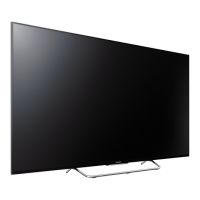
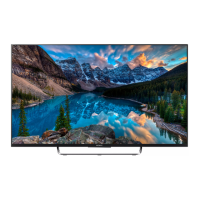
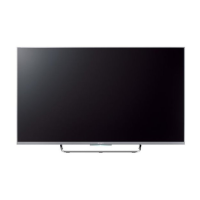

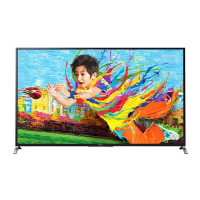

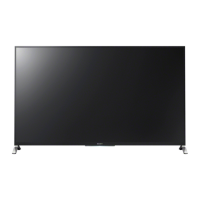

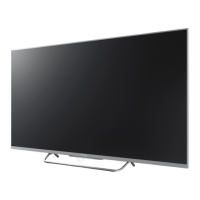


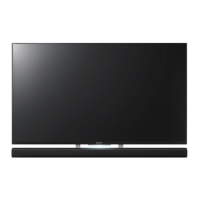
